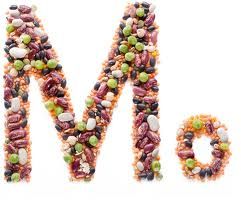Medical expert of the article
New publications
Preparations
Molybdenum
Last reviewed: 23.04.2024

All iLive content is medically reviewed or fact checked to ensure as much factual accuracy as possible.
We have strict sourcing guidelines and only link to reputable media sites, academic research institutions and, whenever possible, medically peer reviewed studies. Note that the numbers in parentheses ([1], [2], etc.) are clickable links to these studies.
If you feel that any of our content is inaccurate, out-of-date, or otherwise questionable, please select it and press Ctrl + Enter.

Basic information about molybdenum
Molybdenum (Mo) is one of the most important microelements that form in the human body various active compounds, enzymes, hormones, respiratory pigments. Its main function is the acceleration of various reactions of the body. It should also be noted that this element is one of the main building materials for xanthoxidase, an enzyme responsible for the conversion of nitrogenous compounds. Molybdenum is mainly found in cellular organelles. High concentration of this microelement is noted in such organs as human skin, liver, kidneys and aorta. In different quantities, molybdenum contains all tissues and organs of the human body.
The need for molybdenum per day
Depending on the level of physical work and body weight of a person, the demand for molybdenum can vary in the range of 75-250 μg.
For elderly people (over 70 years) the need for this trace element is reduced by 25% and is not more than 200 μg.
Under certain conditions, the necessary minimum consumption of molybdenum can vary up to 300-400 μg per day.
Why does the need for molybdenum increase?
The lack of molybdenum is very rare. The reason for it may be a meager, monotonous diet or stay on intravenous nutrition for a long time.
The assimilability of molybdenum
Molybdenum and copper are anti-elements that reduce each other's activity. By displacing copper from its compounds, molybdenum reduces the intensity of oxidative reactions in the body.
To date, the interaction of molybdenum with enzymes, hormones and vitamins is under study. It is important to note that if a large amount of this microelement in the external environment increases the risk of goitre diseases.
As a conclusion - molybdenum is also an iodine antagonist. The excess of this element in the body is the cause of the development of gout and the increase of uric acid in the blood.
Symptoms of a deficiency of molybdenum
Increased formation of kidney stones, increased risk of cancer and impotence.
Signs of an overdose of molybdenum
Excess of this microelement in the diet increases the amount of uric acid in the blood, and leads to the occurrence of "molybdenum gout" and increases the activity of alkaline phosphatase.
Products containing molybdenum (μg per 1000 g)
What is the amount of molybdenum in different products? The largest - in cereals and yeast, legumes and leafy vegetables, garlic.
Vegetables of molybdenum contain 0.04-0.2 mg / kg. Molybdenum is also rich in carrots, apricots, melons, cauliflower and cocoa.
Still this element is found in animal kidneys and liver.
Attention!
To simplify the perception of information, this instruction for use of the drug "Molybdenum" translated and presented in a special form on the basis of the official instructions for medical use of the drug. Before use read the annotation that came directly to medicines.
Description provided for informational purposes and is not a guide to self-healing. The need for this drug, the purpose of the treatment regimen, methods and dose of the drug is determined solely by the attending physician. Self-medication is dangerous for your health.



 [
[